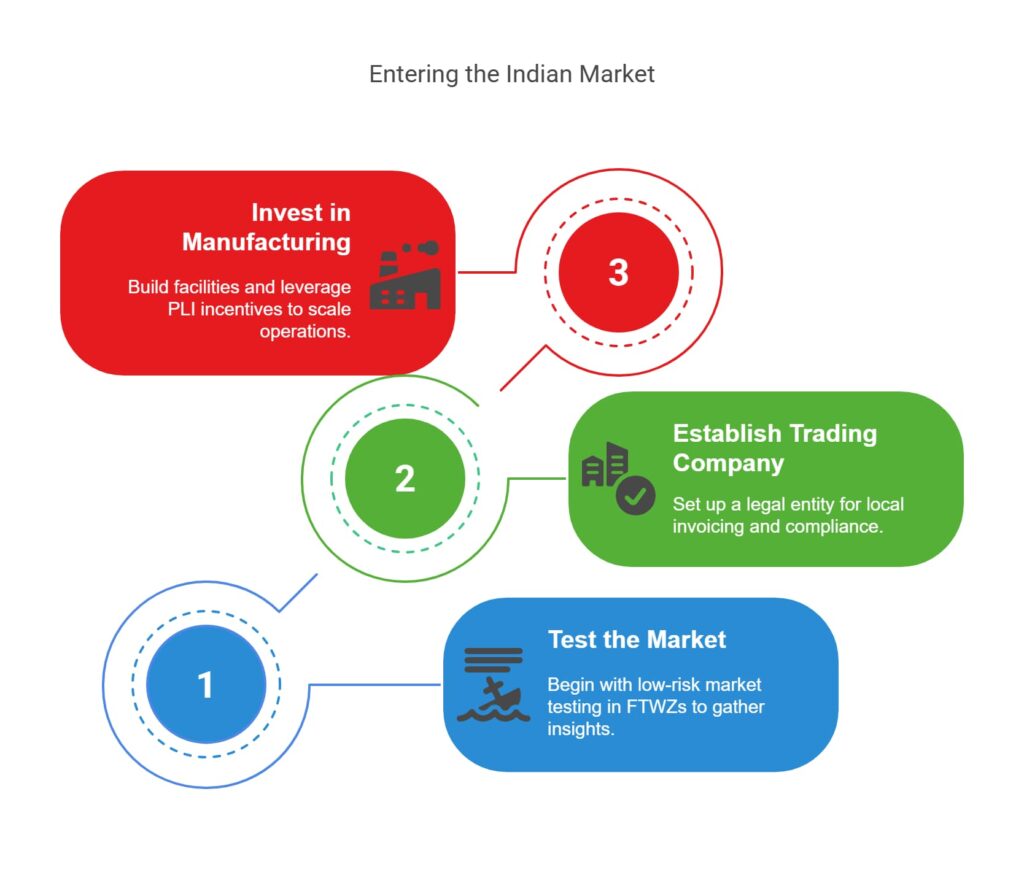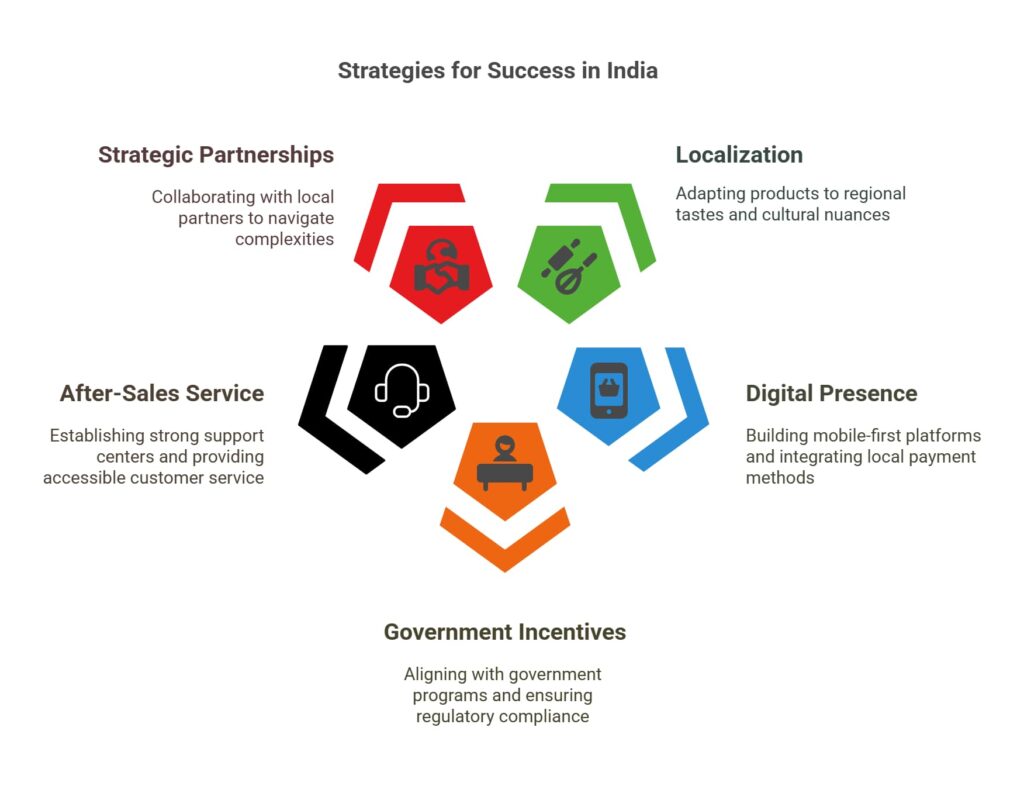

Close

India’s expanding consumer base presents tremendous opportunity for foreign producers looking to expand globally. With a population of more than 1.4 billion, a fast-growing middle class, and a pro-manufacturing, pro-investment government, India is becoming one of the most attractive markets in the world. However, to succeed in India’s complex business environment, one must take a strategic, step-by-step approach to attain lasting success.
Understanding the Opportunity
India’s consumer market offers foreign producers unprecedented opportunity for expansion. Government policies like the Production Linked Incentive (PLI) schemes and the “Make in India” initiative are actively promoting foreign investment in strategic sectors like electronics, semiconductors, and green energy. Coupled with faster digital adoption and increasing disposable incomes, these trends present a strong incentive for manufacturers to set up and expand operations in India.
But investing in such opportunities calls for an appreciation of India’s regulatory complexity, cultural diversity, and regional market dynamics. A strategic, phased approach is called for to successfully navigate this changing landscape.
Strategic Approach for Market Entry
Though it has tremendous potential, India’s market is not free of challenges. An effective entry strategy needs to consider cultural diversity, regulatory complexity, and regional market differences. A phased approach to market entry is strongly recommended:
1. Test the Market
Foreign producers should first pilot the market using Free Trade Warehousing Zones (FTWZs). FTWZs enable firms to stock limited inventory in India without setting up a legal entity, reducing regulatory requirements and financial risk. This phase provides critical market insights, allowing companies to evaluate demand, consumer preferences, and operational requirements.
2. Establish a Trading Company
Once market validation is achieved, establishing a trading company or subsidiary becomes the logical next step. This allows foreign companies to increase domestic invoices, handle taxes, and deal with local compliance issues. It is recommended to consult with specialists in market entry services to deal with India’s complex regulatory environment, which typically includes approvals from several departments for land allocation, utilities, environmental clearances, and labor laws.
3. Invest in Manufacturing
The final phase involves establishing a manufacturing facility. Before this, businesses should have a well-established supply chain, a clear understanding of regional consumer behavior, and solid partnerships with local distributors or service providers. Increasing manufacturing efforts with government incentives, such as PLI, can significantly enhance the financial viability of long-term operations in India.

Key Considerations for Success
Foreign manufacturers must recognize several critical factors to maximize success in India’s consumer market:
• Localization: Product offerings must be adapted to reflect regional preferences, cultural nuances, pricing sensitivity, and language diversity. Uniform strategies across the nation are unlikely to succeed.
• Digital Presence: With over 800 million internet users, a robust digital engagement strategy is essential. Mobile-first platforms, local payment options such as UPI, and customer support in regional languages are crucial for establishing consumer trust.
• Government Incentives and Compliance: While federal incentives are attractive, the bureaucratic process at state and municipal levels can be complicated. Early involvement with local experts helps expedite approvals and ensure full compliance.
• After-Sales Service: Indian consumers give significant value on after-sales service. Establishing regional service centers and providing accessible, responsive support are crucial for fostering brand loyalty.
• Partnerships: Strategic partnerships with local logistics providers, consultants, and distributors can provide operational advantages and critical local knowledge, helping foreign companies navigate the regulatory and cultural landscape effectively.

Strategic Expansion into India’s Consumer Market
India offers a highly attractive growth prospect for international manufacturers who are prepared to make a strategic, step-by-step commitment. By piloting the market, creating a compliant trading presence, and ultimately developing local manufacturing capacity, businesses can take advantage of India’s changing consumer forces. To win in India, it is essential to plan carefully, be sensitive to the culture, become digitally agile, and establish powerful local partnerships. Firms that make a commitment to grasp and become part of India’s distinct market context will not only do business in India—they will prosper alongside its ongoing economic ascension.
We co-create with our customers at the center, combining deep domain expertise with innovative technology and talent solutions to accelerate growth. Our passion for excellence drives us to transform businesses, unlocking new opportunities and delivering lasting impact.
Subscribe to our newsletter to get our newest articles instantly!
Smart Leaders Are Rethinking Outsourcing. Are You? As global businesses face margin pressure and tech talent gaps, outsourcing is evolving from a cost play to a growth strategy. We're inviting senior leaders to share their perspectives in a short survey that explores how companies are scaling faster and operating leaner through smarter outsourcing. Take the short survey now and lead the next wave of global delivery excellence.
